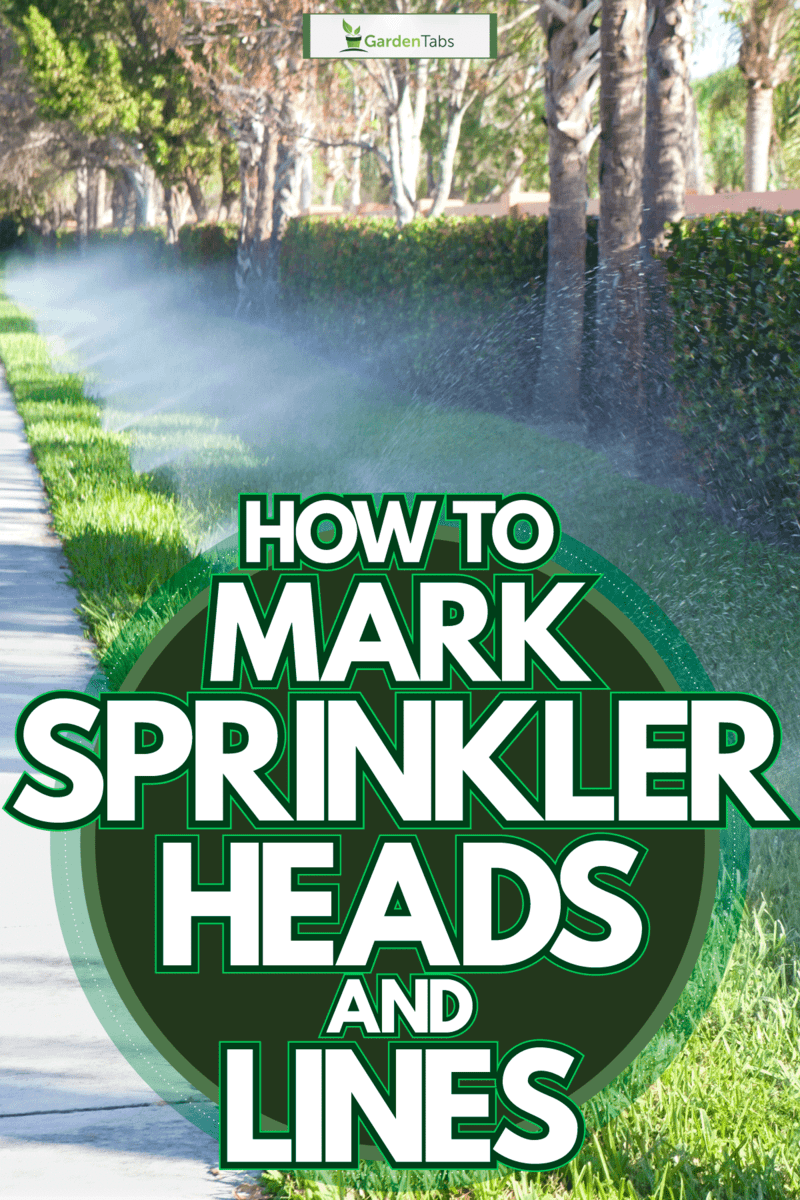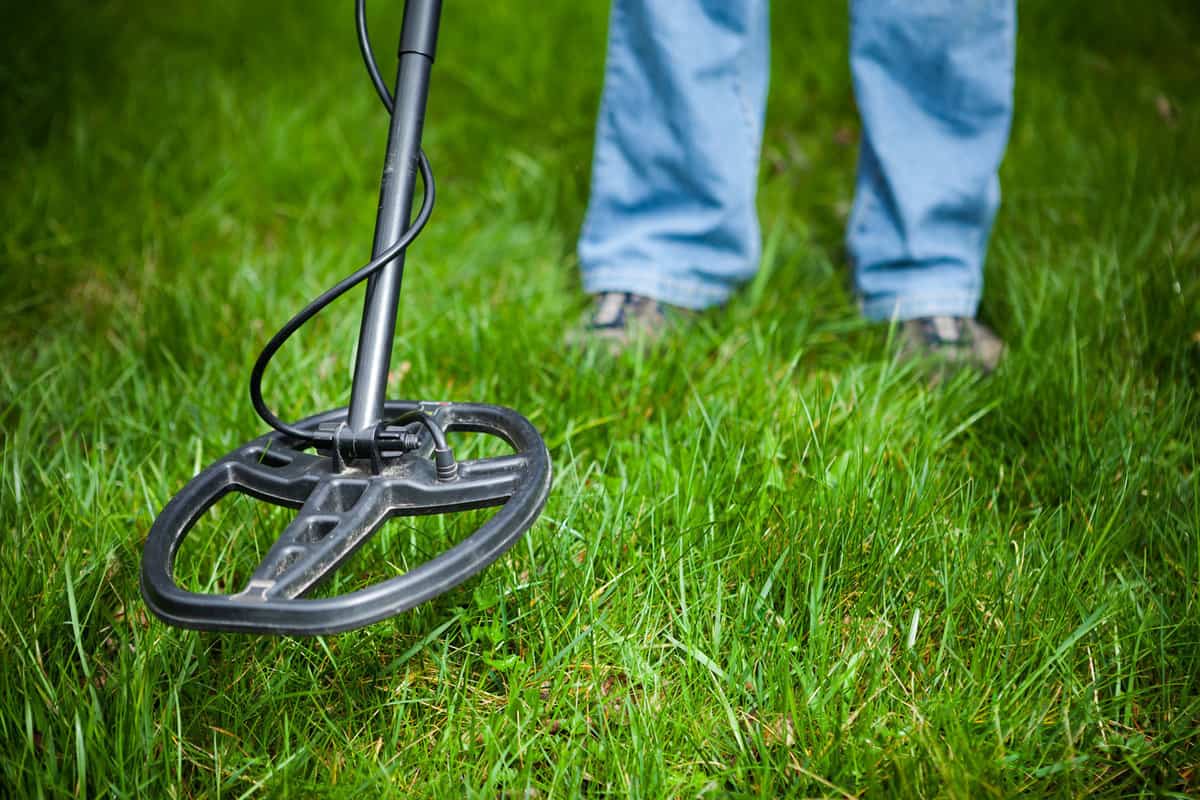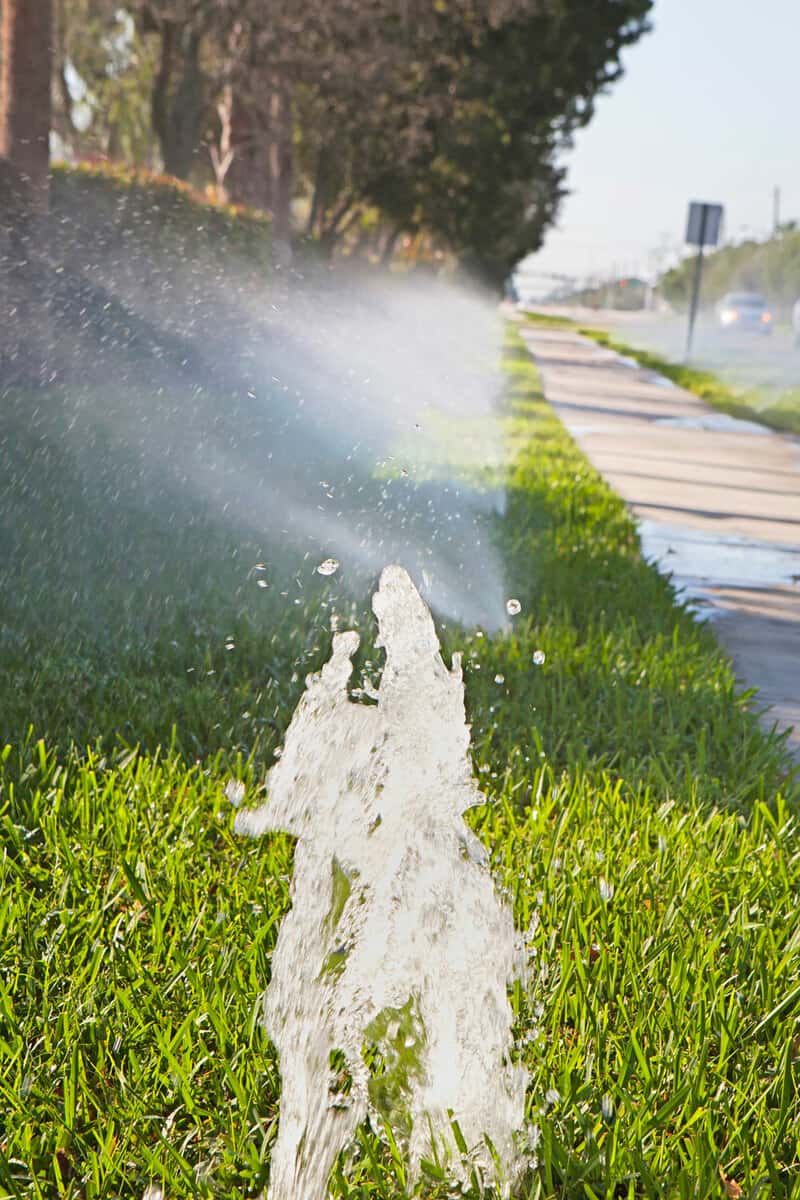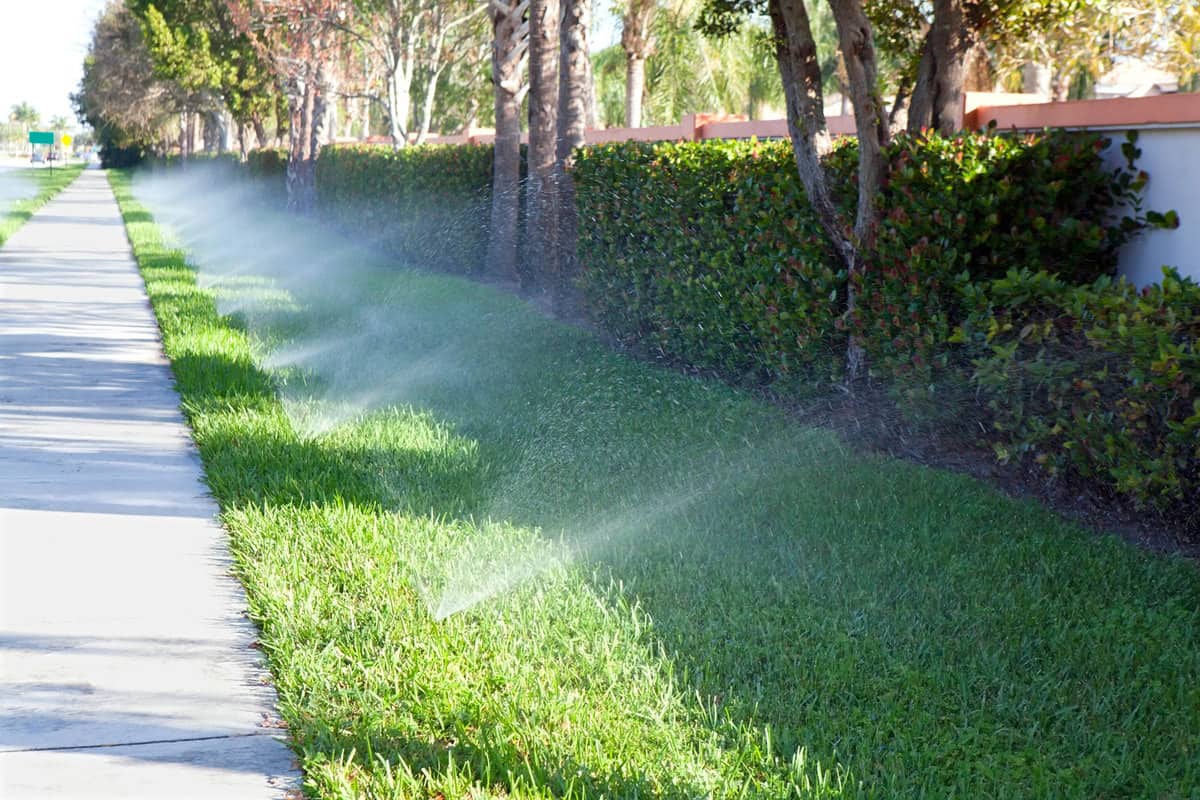Would you like to know how to mark sprinkler heads and lines? Well, we have researched this topic and have answers for you. It is vital to understand how to mark sprinkler heads and lines if you are working with or near them.
You want to mark sprinkler heads and lines with irrigation flags. To do this, use a different color flag for sprinkler heads and lines and place a flag every ten feet along a sprinkler line to mark it.
In this article, we will learn how to mark sprinkler heads and lines. We will also learn the answers to other interesting related questions, such as how do you find buried sprinkler lines and how do you repair broken sprinkler lines and heads? Keep reading to learn more.

How To Mark Sprinkler Heads And Lines
When marking sprinkler heads and lines, it is best to use irrigation flags. Irrigation flags are small, brightly colored plastic flags attached to thin metal wires. The thin wires make them easy to insert into the ground, while the brightly colored plastic makes them easy to see.

When working on or near an irrigation system, it would be best to mark all of the sprinkler heads and lines that you may come close to. When marking the sprinkler heads and lines with flags, use different colors for each to tell them apart quickly.
Also, when marking a sprinkler line, be sure to place a flag every ten feet to see it better. If you need to dig near a sprinkler line, try to keep at least a foot away from each side of the line of flags to avoid damage to the pipe.
Dig gently to avoid breaking the pipe if you have to dig directly next to a sprinkler line.
Properly marking sprinkler heads and lines can be tedious but are worth the time if they prevent you from breaking a sprinkler line, which can turn a small job big.
How Do You Find Buried Sprinkler Lines?

Finding buried sprinkler lines can be challenging, but doing it yourself can save you money. When searching for buried sprinkler lines, you will need the right tools and technique.
The best way to find a buried sprinkler line is to locate either a sprinkler head or manifold and probe the ground with a shovel around where the pipe should be. Then once you find a part of the pipe, probe for the pipe again several feet away in the direction it travels.
Keep using this method until you've traced the entire sprinkler line.
One way to improve the ease of probing for the buried sprinkler line is using a digging shovel. Digging shovels are narrower than spade shovels and provide a mechanical advantage for digging.
By utilizing a narrower shovelhead, digging shovels experience less friction when digging.
Digging shovels have the drawback of scooping less dirt per scoop, but that shouldn't be an issue when using them for precision work like probing for sprinkler lines.

Also, If the sprinkler line you are looking for has a break, you can turn on the water to the sprinkler line and see where water gathers. Digging in the wettest part of the dirt will locate the break and identify the sprinkler line's location.
How Do You Find A Buried Sprinkler Wire?
When locating buried sprinkler wire, you mustn't break it. Even a tiny knick in a sprinkler wire can stop a signal from getting through and disrupt the system.
To start finding the buried sprinkler wire, locate a place close to where you know the wire is. The best place to begin locating sprinkler wire is either by the sprinkler box or the manifold since both will have the sprinkler wire exposed and close to the surface.
Take a narrow shovel and gently probe for the wire by lifting the dirt and looking for the sprinkler wire. Be sure to take your time with this process since the wire can easily be damaged.
As you locate the wire at different points along the line, mark them, so you don't have to rediscover it.

If you are looking for a less invasive method to find a buried sprinkler wire, you could use a metal detector. Since the sprinkler wires are copper, they quickly show up on a metal detector, even if buried more than a few inches.
To use the metal detector to find the wire, point the detector over the area you suspect of having the wire. Your sprinkler wire is under the sensor if your metal detector detects copper.
You can then use the metal detector to trace and mark the sprinkler wire. Using the metal detector allows you to find the sprinkler wire without digging.
How Do You Repair Broken Sprinkler Lines and Heads?
If you have a broken sprinkler line or head, it can cause significant flooding when the sprinklers are on. Before you can repair a broken sprinkler line or head, you need to turn off the water.
Often the irrigation water is on a different water supply from the house water and can be turned off with a sprinkler key. A sprinkler key is a long metal tool that can twist a stop waste valve and turn off the water to the sprinkler system.
Once the water is under control, you can assess the situation. Find the leaking water area and clear the dirt away from the pipes.
Digging the dirt away from the pipes means cutting away and storing the sod for later.
Next, you need to clear all of the dirt around at least three inches under the pipe and three inches on each side, so you have room to cut and glue new pipes to the old ones.
Once the pipes are exposed, you can identify if it's a break in the line or a faulty sprinkler head. Let's look at how to repair each from this point.
Repairing A Broken Sprinkler Head
If you notice that the problem is a broken sprinkler head, you are lucky. Repairing a broken sprinkler head is easier than repairing a broken sprinkler line.
First, ensure no remaining dirt around the connection between the broken sprinkler head and the pipe. Any dirt that gets into the line can clog other sprinkler heads, so caution is needed.
Next, unscrew the sprinkler head counterclockwise until entirely disconnected from the line. Then take the new sprinkler head and screw it in until it's tight but don't force it.
If you turn the sprinkler head too much, you can strip the plastic, which will ruin the head.
Once the sprinkler head is installed, you need to replace the dirt you cleared when assing the issue. The soil helps hold the sprinkler in place and supports the line, so be sure to pack it tightly around the pipe.
Then replace any sod that you removed at the beginning.
Once the sprinkler head is installed and the dirt is replaced, adjust the flow and angle with a sprinkler tool, and you're done.
Repairing A Broken Sprinkler Pipe
If you look at the break and there's a crack in the main pipe, you will need to repair it. One common method for repairing a break in a sprinkler pipe is to use a slip-fix.
A slip fix is a length of pipe that can extend and still hold water pressure which makes it very versatile.
You will need PVC primer, glue, pipe cutters, and the slip-fix to use a slip-fix.

Start by taking your pipe cutters and cutting out the bad part of the pipe. Wipe any dirt off the ends of the exposed line to keep it clean and reduce the odds of dirt getting into the sprinkler system.
Next, apply a primer layer to both sides of the slip-fix and the exposed pipes. Allow a minute or two for the primer to dry.
Take the PVC glue, apply a coat of glue to one side of the slip-fix and one of the exposed pipes, and press the slip-fix onto that exposed pipe. Give the bond a minute or two to dry before touching the pipe.
Most PVC glues are fast-drying, so two minutes should be sufficient.
Now apply glue to the other side of the slip fix and the remaining pipe. Then, using the magic of the slip-fix, slide the slip-fix open to connect both pipes.
Give the glue another minute to dry, and you're done. The slip-fix should be able to handle water after ten minutes and will be at full strength in twenty-four hours.
Final Thoughts

In this article, we learned to use irrigation flags to mark both sprinkler lines and heads. We also learned how to locate both buried sprinkler lines and wires.
Remember to be gentle when searching for sprinkler wires since even small amounts of damage can break their function.
Made it to the end? Check out these helpful related posts!
